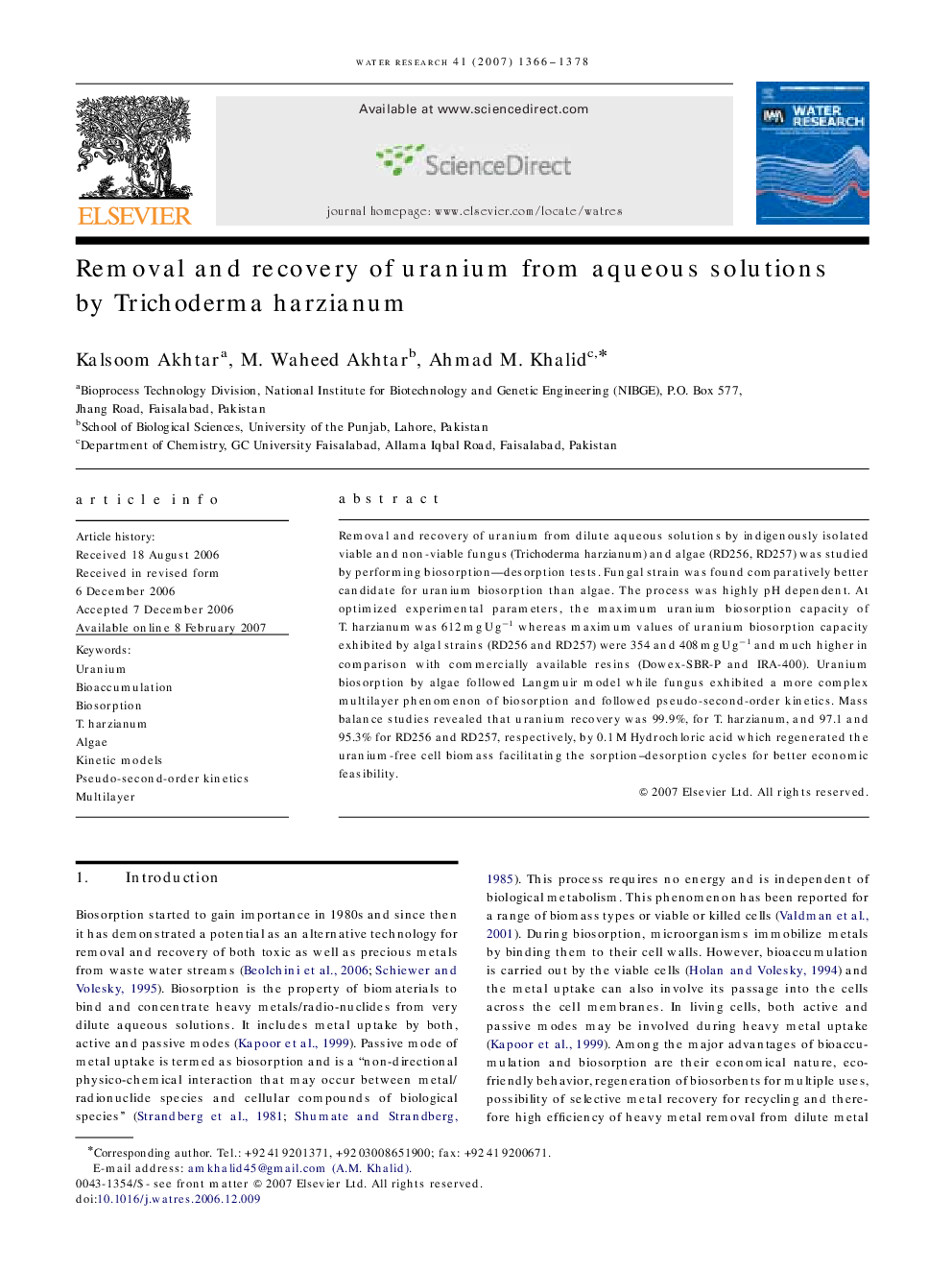| Article ID | Journal | Published Year | Pages | File Type |
|---|---|---|---|---|
| 4485424 | Water Research | 2007 | 13 Pages |
Removal and recovery of uranium from dilute aqueous solutions by indigenously isolated viable and non-viable fungus (Trichoderma harzianum) and algae (RD256, RD257) was studied by performing biosorption—desorption tests. Fungal strain was found comparatively better candidate for uranium biosorption than algae. The process was highly pH dependent. At optimized experimental parameters, the maximum uranium biosorption capacity of T. harzianum was 612 mg U g−1 whereas maximum values of uranium biosorption capacity exhibited by algal strains (RD256 and RD257) were 354 and 408 mg U g−1 and much higher in comparison with commercially available resins (Dowex-SBR-P and IRA-400). Uranium biosorption by algae followed Langmuir model while fungus exhibited a more complex multilayer phenomenon of biosorption and followed pseudo-second-order kinetics. Mass balance studies revealed that uranium recovery was 99.9%, for T. harzianum, and 97.1 and 95.3% for RD256 and RD257, respectively, by 0.1 M Hydrochloric acid which regenerated the uranium-free cell biomass facilitating the sorption–desorption cycles for better economic feasibility.
